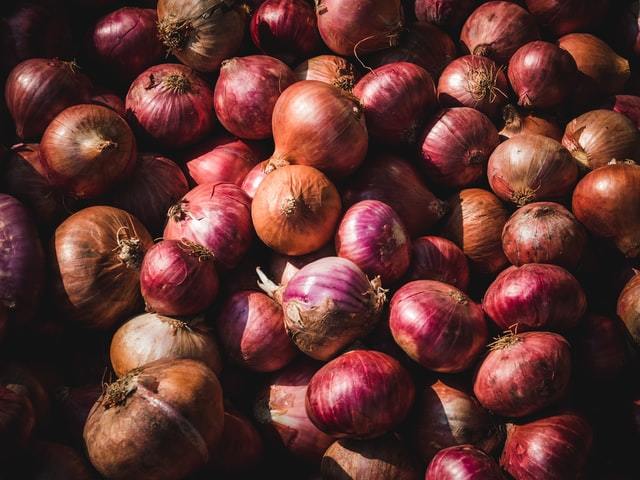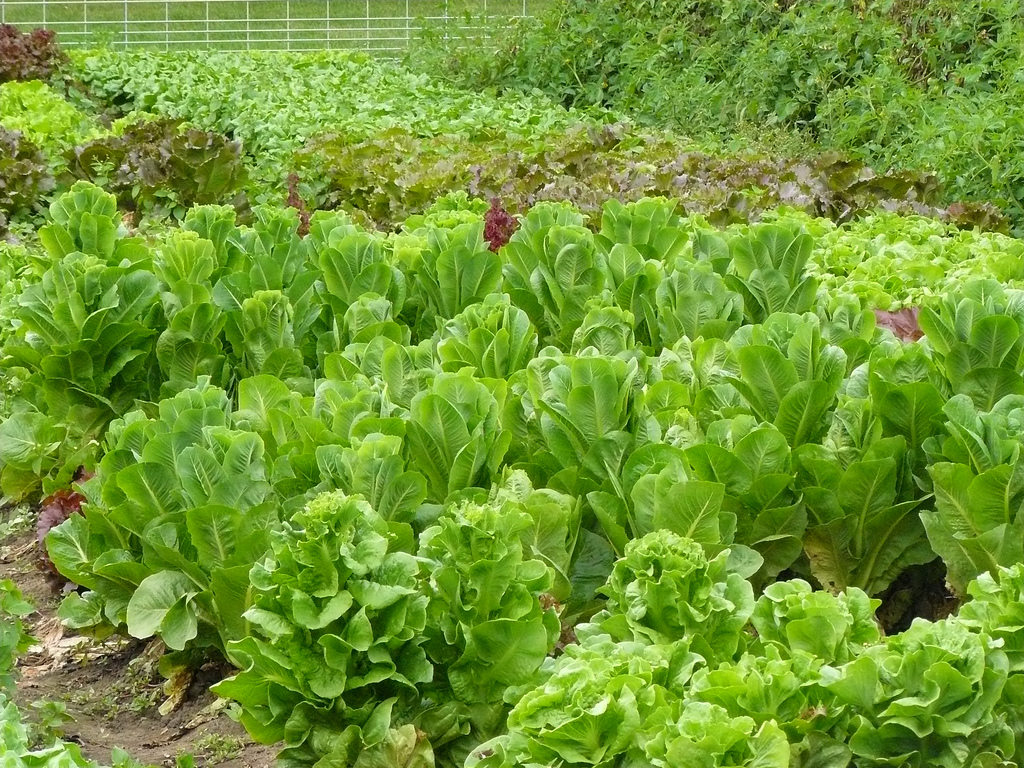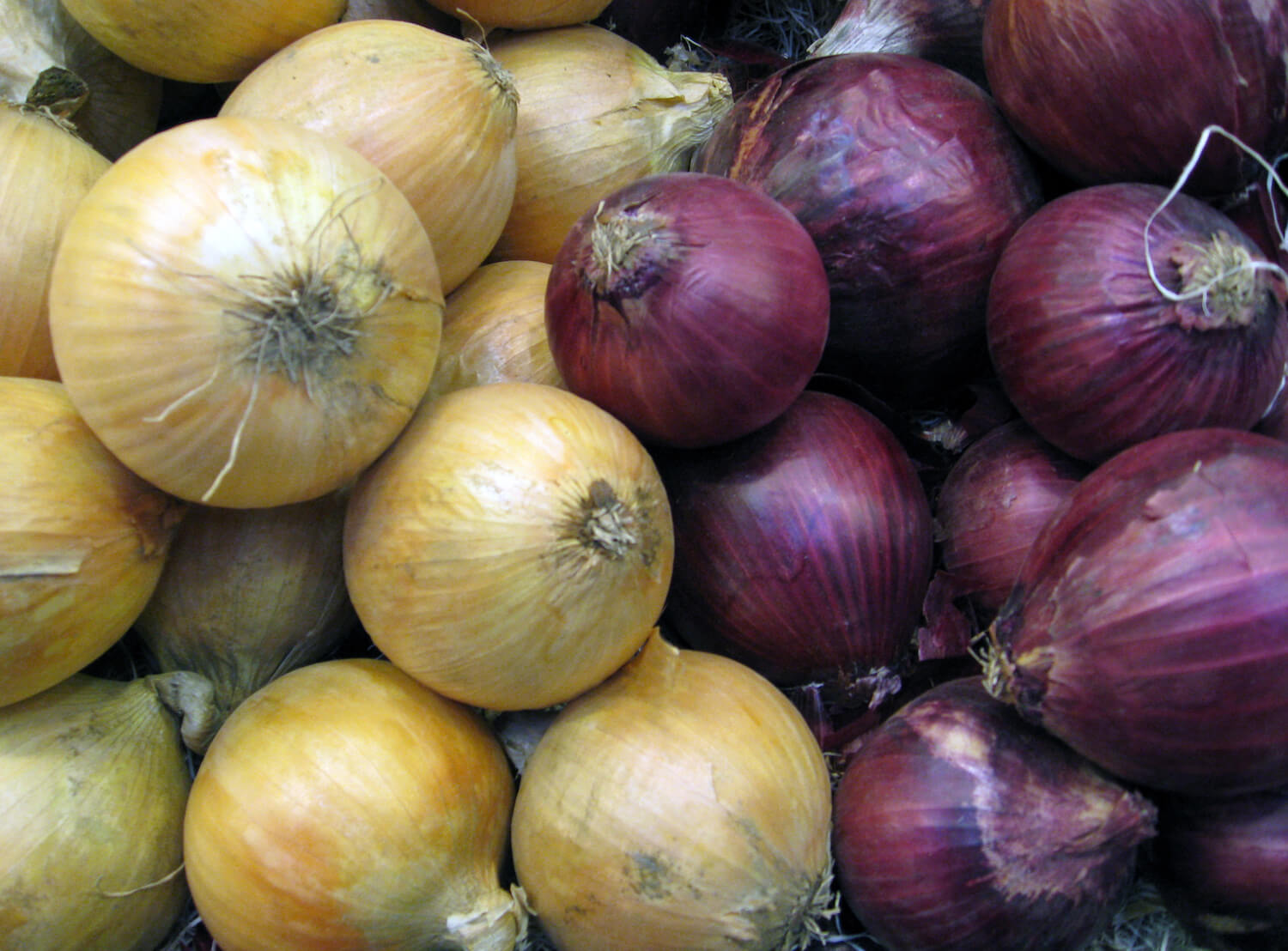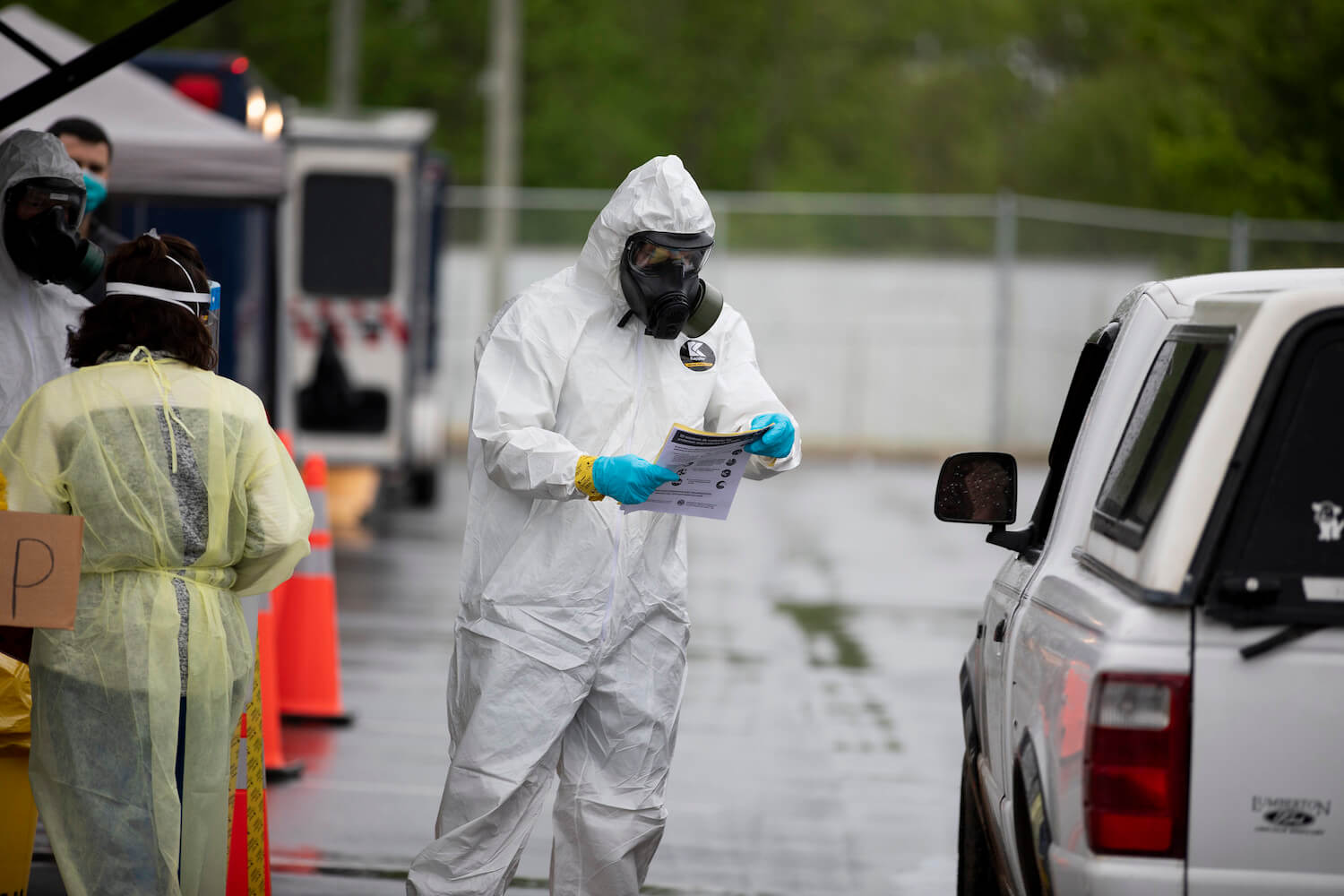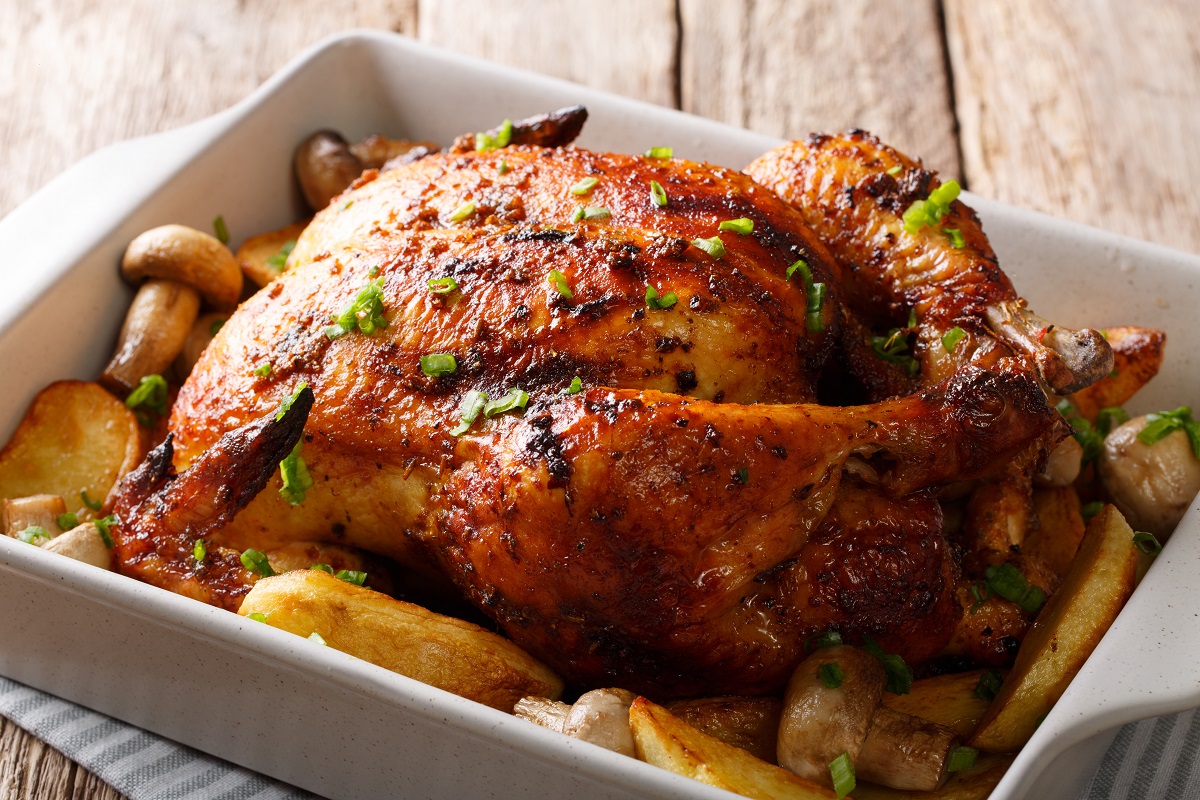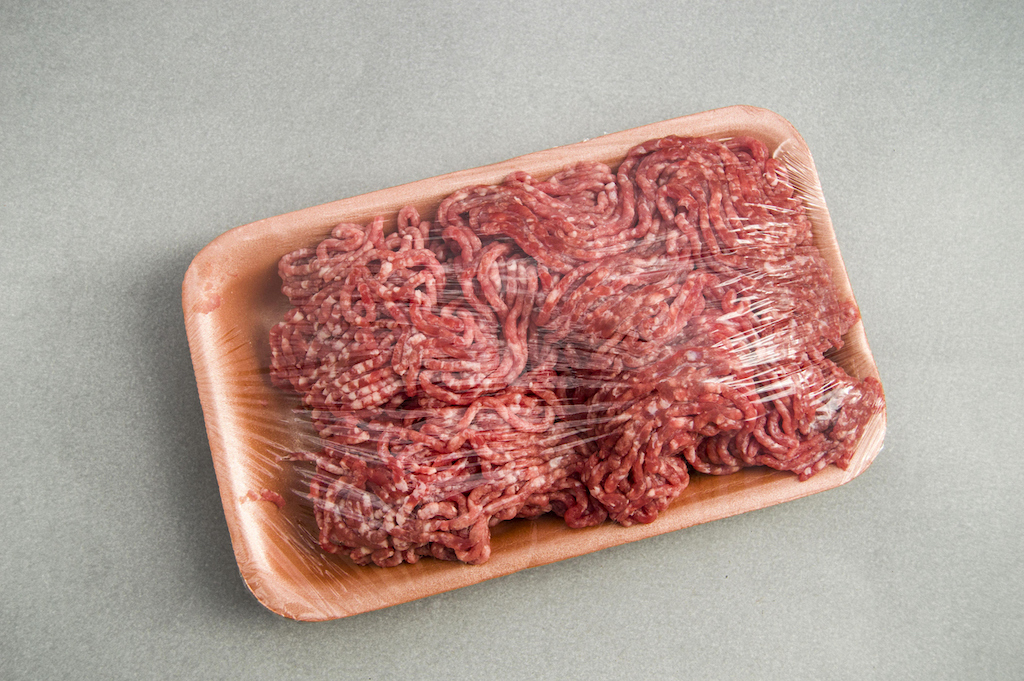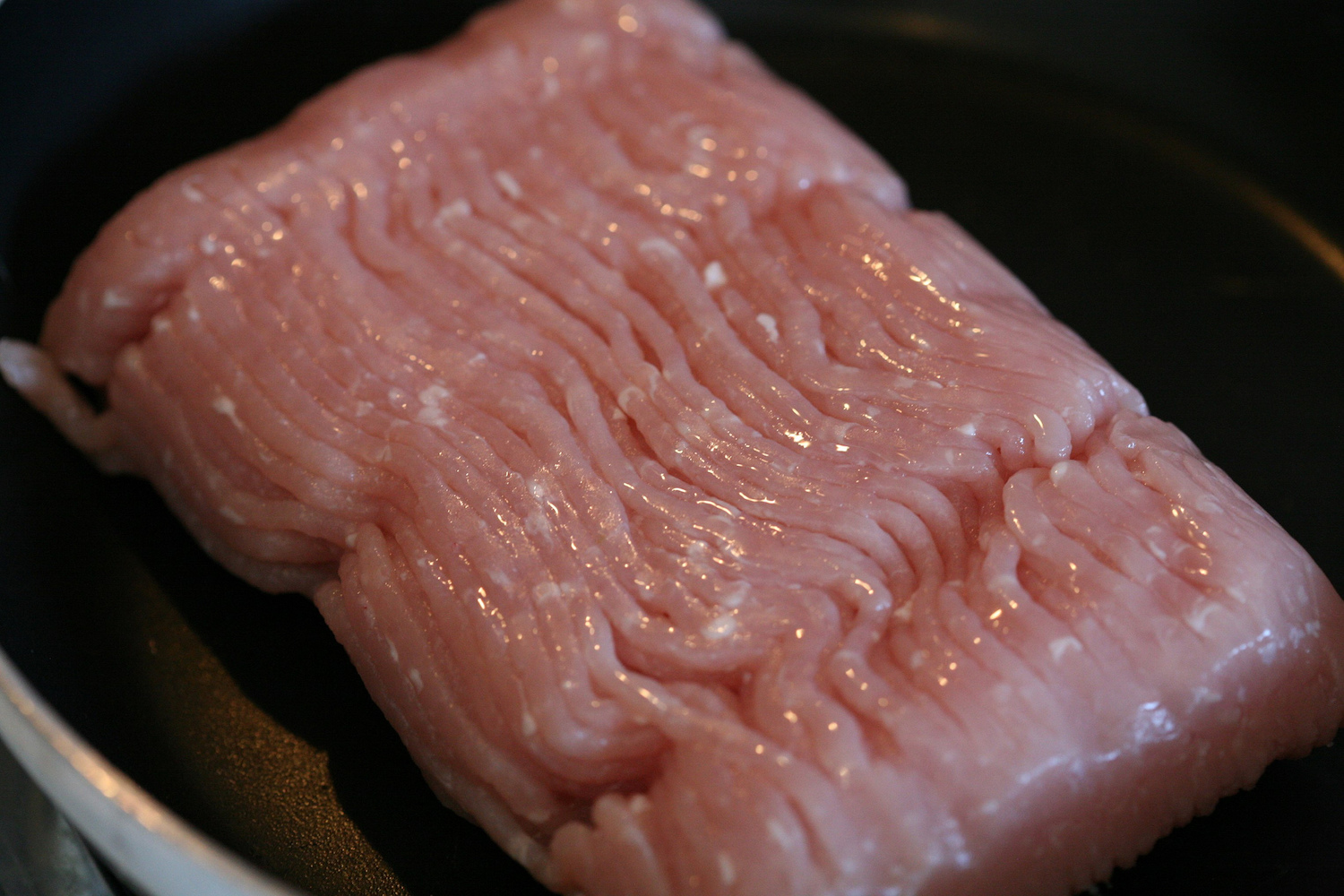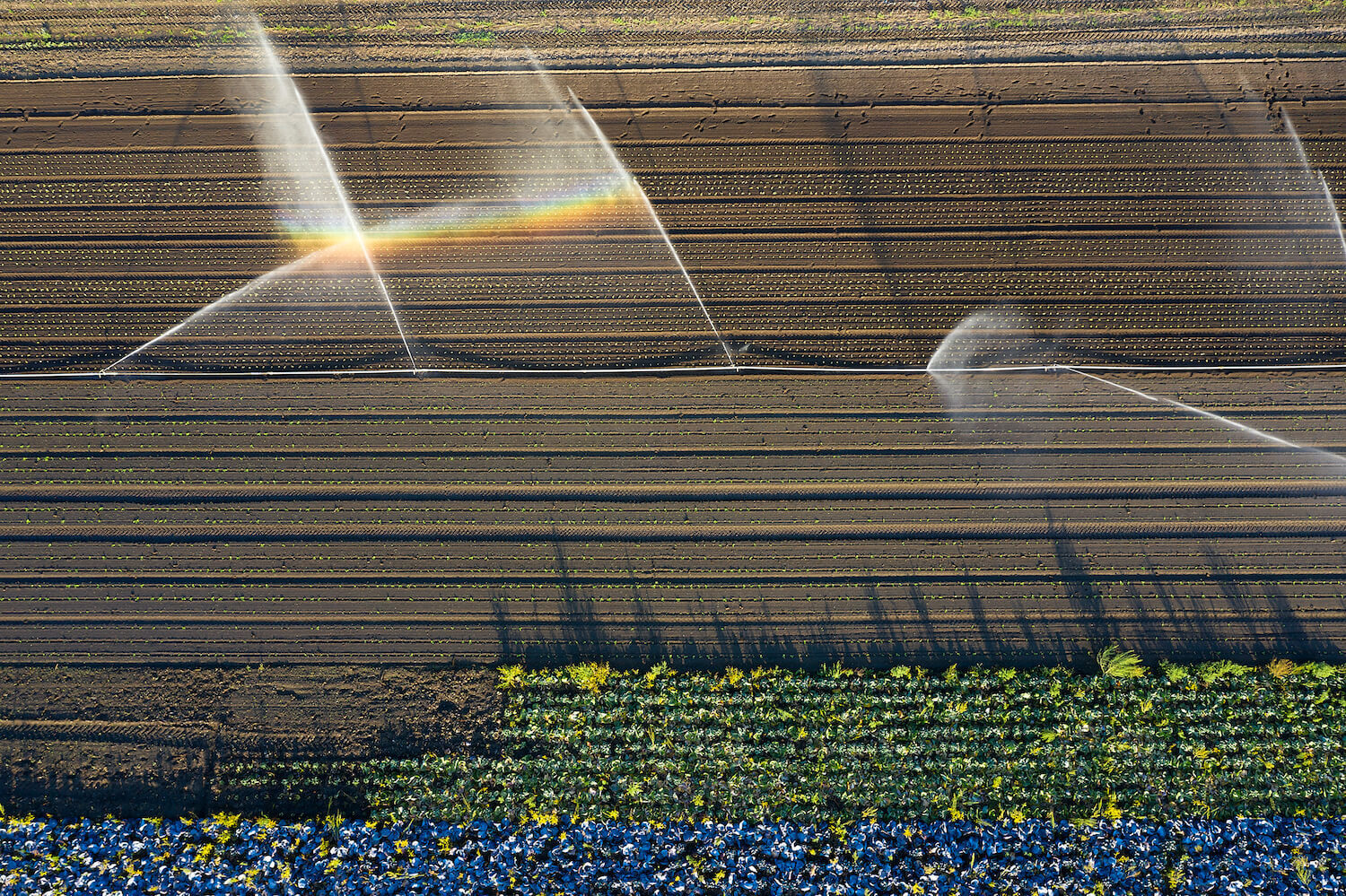
iStock/Bim
A new report investigates potential causes behind the biggest Salmonella outbreak in over a decade, which sickened more than 1,500 people across North America. FDA estimates that tens of thousands more illnesses may have gone unreported.
Beginning last June, after eating onions, people across the United States and Canada started to fall sick. By August, hundreds of illnesses had been reported in more than 30 states, prompting major onion supplier Thomson International Inc. to recall products from shelves across the continent. That meant pulling red, yellow, and white loose onions out of the market, as well as numerous products made with them like salsas, dips, and meal kit ingredients. By the end of the outbreak, at least 160 people had been hospitalized and 1,500 sickened—a significant undercount, according to the Food and Drug Administration (FDA). The agency estimates that tens of thousands of cases may have gone unreported, marking the biggest Salmonella outbreak in over a decade.
Now, public health officials are starting to piece together factors that may have led to the foodborne illness outbreak, flagging pathogens in water, feces from sheep on nearby farms, and unclean packing equipment as potential causes.
According to a new report, the agency tested almost 2,000 samples of feces, water, soil, and surface swabs. While a handful tested positive for Salmonella, none matched the particular strain of the pathogen that caused last year’s outbreak. In other words, the exact origin of the outbreak can’t be confirmed.
“A big part of the challenge with these outbreaks is the delay between when an outbreak is identified and when whoever is going to investigate that outbreak starts to do the actual sampling.”
“The report is somewhat speculative in nature,” said Joy Waite-Cusic, an associate professor of food safety systems at Oregon State University, who advises farmers mitigating pathogen risk and has studied contamination of onions. Waite-Cusic pointed out that a lack of definitive findings is pretty par for the course when it comes to investigations of foodborne illness. For instance, FDA’s latest investigation of an E. coli outbreak linked to leafy greens didn’t identify a precise source, nor has its ongoing investigation into last year’s Salmonella outbreak linked to peaches. Even the cause behind the Dole baby spinach E. coli outbreak, arguably the most infamous domestic outbreak to date, remains inconclusive.
It’s difficult to locate the exact pathogen strain linked to a foodborne illness outbreak for a pretty simple reason: By the time someone eats an offending onion, the environmental circumstances that caused contamination may have changed.
“A big part of the challenge with these outbreaks is the delay between when an outbreak is identified and when whoever is going to investigate that outbreak starts to do the actual sampling,” Waite-Cusic said. Contaminated product has to get harvested, make its way to grocery shelves, get consumed at restaurants or at home, and sicken multiple eaters, before it prompts a traceback investigation. “By the time [FDA] gets to the site, it’s not under the same conditions it was six weeks ago.”
Nonetheless, FDA detailed a number of conditions on two Thomson International farms and packing facilities that may have contributed to Salmonella contamination. In Holtville, California, the company’s fields were located directly next to farms where sheep grazed; several cattle feeding operations were also situated nearby, the agency noted. If you’re feeling déjà vu, there’s a good reason for that: Time and time again, FDA investigations have suggested that feces from neighboring livestock facilities may contaminate irrigation water used to grow produce. Sure enough, samples taken from Thomson International’s canals tested positive for Salmonella. (The Counter reached out to Thomson International for comment and will update this post if the company responds.)
“Irrigation water used to grow onions is not customarily treated before application to the field.”
FDA also found a concentrated animal feeding operation (CAFO) located half a mile away from Thomson’s Bakersfield, California, fields, along with frogs and birds in and around irrigation water. Cats and birds were also found inside buildings, and FDA noted that some food contact surfaces hadn’t been properly sanitized.
Waite-Cusic pointed out that some of these concerns are hard for growers to avoid. If there’s a livestock farm nearby, there’s not much an onion producer can do about it. FDA seemed to acknowledge the intractability of some of the conditions that can lead to contamination in its report. Farming groups have tried to mitigate the risk that CAFOs pose by implementing wide buffer zones between fields and livestock farms.
“Irrigation water used to grow onions is not customarily treated before application to the field,” it wrote. “The investigation results indicated that this operation’s practices were generally consistent with industry-wide practices, including those pertaining to water use.”
In an unexpected development, the agency also found four samples that tested positive for Salmonella strains that were identified during outbreaks linked to raw sprouts in 2016 and 2018. This could suggest other produce grown in the same regions may be similarly vulnerable to contamination. It also explains why, in its investigation takeaways, FDA urged “all farms” to stay alert to potential sources of contamination in irrigation water.
That doesn’t mean Thomson International is off the hook just yet. Numerous class action lawsuits over the tainted onions are currently winding their way through the courts.

